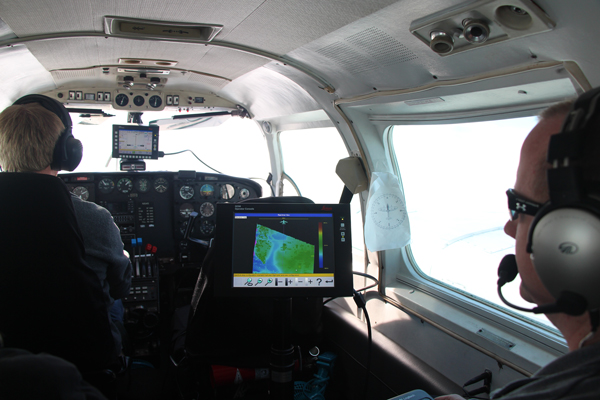Higlights:
- ASI provides aerial acquisition, processing, orthophoto production, mapping and LiDAR services to large geospatial clients
- The Leica ALS70-HP LiDAR sensor is designed for mapping at the most common flying heights and accommodates greater terrain relief with its maximum height
- RCD30 cameras can collect co-registered 80 megapixel rgbn imagery using a single camera head
- The platform offers the opportunity for future upgrades to the ALS80-HP
Leica Geosystems Inc. today announced that Aerial Services, Inc. (ASI), a privately owned small business based in Cedar Falls, IA, has purchased a Leica ALS70-HP LiDAR sensor co-mounted with a four-band, 80 megapixel RCD30 imaging camera. ASI provides aerial acquisition, processing, orthophoto production, mapping and LiDAR services to government, utilities, engineers, and other geospatial clients.
“As the advances in LiDAR technology and applications continue to drive a rapid increase in market value, ASI has been committed to bringing those new capabilities to our clients,” said Mike Tully, the company’s CEO and president. “Beginning in 2012 with the purchase of a high-density corridor scanner, and now with the purchase of a Leica ALS70-HP and RCD30, ASI is positioned to be able to take on any project, large or small.”
The Leica ALS70-HP is designed for general purpose mapping at the most common flying heights and can accommodate greater terrain relief due to its higher maximum flying height. The flexible sensor solution enables ASI to expand on its current airborne LiDAR capabilities with a high altitude system while providing the opportunity to upgrade later on to the most current technology, the ALS80-HP, thus extending the life cycle of the firm’s investment. The Leica RCD30 is the only camera that is able to collect 80 MP RGBN multispectral imagery perfectly co-registered using a single camera head.
“We were looking for a LiDAR sensor that could meet the specifications of the 3DEP program and support our bids for statewide LiDAR projects,” Tully continued. “With Leica Geosystems’ combination of sensor and camera, we can fly higher and faster, while collecting the amount of data and accuracy we need to meet USGS Quality Levels 1 and 2. The system is also capable of high density corridor collection for additional capacity in that area. The four-band Leica RCD30 also complements our two Leica ADS80 pushbroom sensors.”
ASI serves clients with diverse needs, including agriculture and precision farming, infrastructure and construction management, natural resources and coastal conservation, aviation navigation and safety, geologic resource assessment, and forest resources management. The ALS70-HP and RCD30 add much-needed capabilities and flexibility to complete custom projects.
“Aerial surveying and photogrammetry is not something that just anybody can do well, and having the right equipment is key,” said Tully. “Also, with ASI’s decades of experience and reputation for quality, clients can trust that their projects are flown and processed by the best.”
“I have enjoyed working with Aerial Services, Inc. since they became a Leica Geosystems customer in 2008, when they purchased the first of their two Leica ADS80 sensors,” said Shawn Slade, aerial mapping systems sales manager for Leica Geosystems NAFTA. “They have been a long and valued customer of Leica Geosystems, and I look forward to continuing my strong relationship with them as they expand and grow their LiDAR presence in the North American market.”
“Leica Geosystems designed the ALS70 LiDAR sensor and the RCD30 digital imaging camera to deliver excellent quality data for diverse applications,” said Jean Gardiner, vice president of the geospatial solutions division in North America for Hexagon Geosystems. “The high density point clouds and multispectral photogrammetric imagery address many needs of the airborne survey market.”






